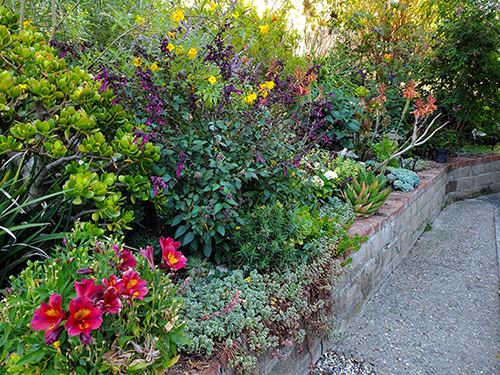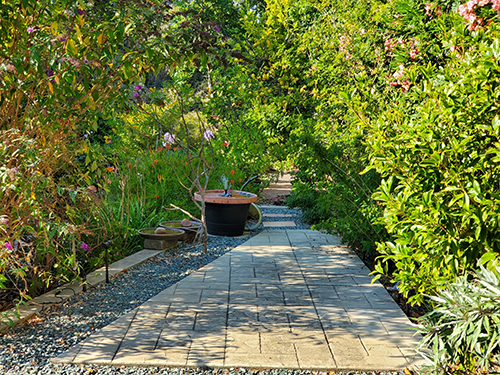Winner of the 2022 Audubon Society Photography Award
What does it take to become an outstanding wildlife/bird photographer? The answer is an injured knee, years of devotion, and total immersion in nature. Peter Shen, a former Senior Director in the fast-paced Advertising Marketing business sector, found his way into birding/outdoor photography eight years ago after injuring his knee while golfing.
Since turning his attention to outdoor photography, Peter has been particularly fascinated by wild birds. During his daily nature walks in the Bay Area, he carefully observes and listens to birds, making it easy for him to identify their species and understand their behaviors. Eight years later, Peter has become an expert in shooting striking images of wildlife in the Bay Area. Through his lens, he captures the rhythm bird life – flying swallows dancing elegantly, powerful raptors catching prey, and newborn baby birds eagerly waiting for food. It is not surprising that Peter’s stunning image of the Western Grebe family (titled “Heads or tails?”) won the prestigious 2022 Audubon Society Photography Awards in the Amateure Category.

Recently we had a delightful conversation with Peter. During the interview, Peter’s lively and humorous words shed light on his personality as someone who loves to share positive energy with the people around him. As he said, “I love seeing people smile; family and friends’ laughter are the best sounds.” According to Peter, his mantra is “just do it”. For anything he does in his life, he always jumps in wholeheartedly with passion.
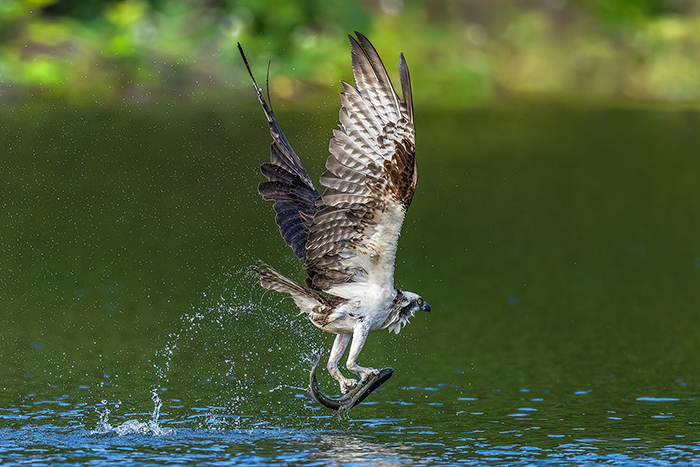
With this undaunting passion, Peter first joined a Facebook group called Fremont Birding Circle. The founder of the group is Jerry Ting, an exceptional birder, and a fantastic photographer according to Peter. Jerry patiently answered all of Peter’s birding questions and opened the door for Peter to the world of birding photography. Later, Peter found his birding buddy, Arnold, who taught him how to identify birds by ear and how to explore parks to find them. Elizabeth, a trusted friend and mentor, has had a tremendous impact on Peter. He learns from her how to respect nature and care for wildlife. She also taught him how to take better photos, understand composition, look for good lighting, and the proper way to process the image during post-production. Peter has also cultivated friendships with Golden mates and Birding friends groups and various other Birding Friends groups. They inspire each other and share images and stories. It provides constant motivation to seek out new experiences and find new species.
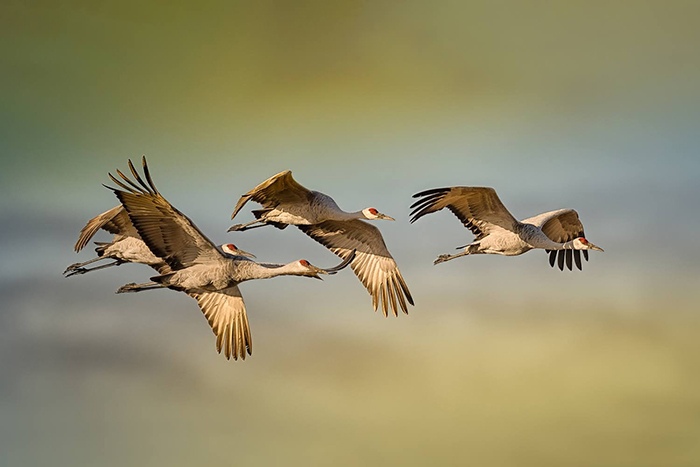
Peter feels he is fortunate to live in the Bay Area of California where he is inspired daily by gorgeous scenery, beautiful weather, wonderful regional parks, and wildlife. Birds, native or seasonal, can be found in all the parks and backyards. After eight years, Peter felt he only scratched the surface of all the parks in the Greater Bay Area. This is why he never ventured out to other areas. Peter does not look for quick “trophy” shots. Instead, he embraces the natural environment and treats the birds near where he lives as family: every day’s walk is his way of greeting his family members.
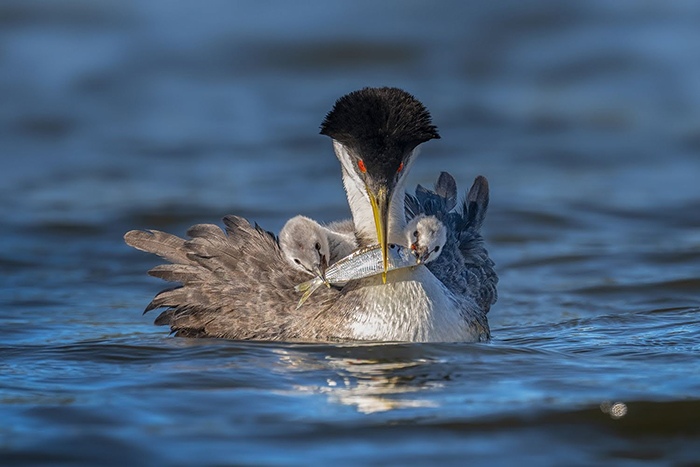
One sunny morning last year, Peter hiked for just a little over half a mile on a narrow rocky trail toward Calero Reservoir in San Jose, California. At one of the bends in the trail, he spotted a Mama Western Grebe carrying babies on her back, not too far from the shore. Quickly he unpacked his camera gear and dropped to his knees. The babies were resting their heads on the back of their mother. Peter heard the male calling from a distance with a fish in his mouth. This sound immediately woke the babies – they knew food was on its way! As the male got closer, the babies became more animated and excited. While the male passed the fish to the mama, she turned directly to face Peter, making eye contact; Peter was just as excited as those baby grebes. Then the magical moment came – both babies wrestled over the fish. One of the babies was more aggressive and got hold of the fish, but the other quickly bit onto the other end of the fish and a tug-of-war ensued.
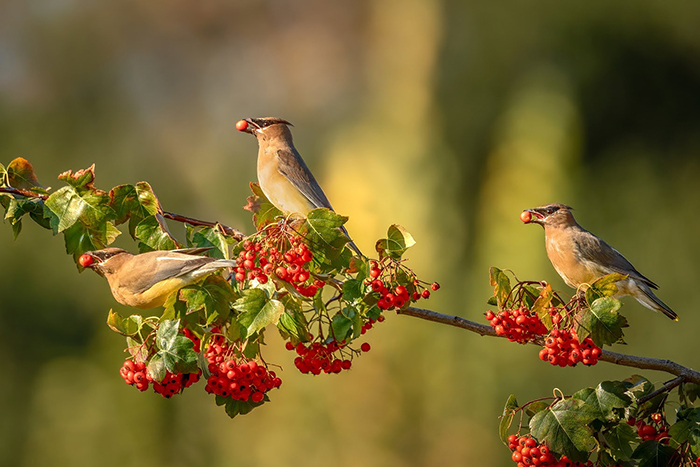
Peter enjoys trying out different camera equipment. He started out with a Canon setup and later moved to Nikon. Today his go-to camera is the Sony A1. The two primary lenses he uses for wildlife photography are the Sony 200-600 for lightweight walk-around birding and the 600mm primary lens.
His wildlife birding is continuously evolving. In order to learn more about birds, their behaviors, habitats, sounds, and motions, Peter started shooting short clips of videos to tell a more complete story of birds from his own backyard. With limited backyard space, Peter wants to create a “sanctuary” bird haven for them.
He planted small trees with flowers that are liked by hummingbirds and butterflies – Mexican Bush Sage, Lion’s Ear, Cape Honeysuckle, Aloe brevifolia, Echeveria Succulents, Yellow Trumpetbush, Tecoma Fulva, Salvia Coerulea, Pride of Madeira, etc. He also set up a water filter and built a water fountain for hummingbirds and other birds to take a bath on a hot summer day. He cut down some trees and replaced them with berry-producing trees that birds can eat during different seasons – Toyon, Coffeeberry, Japanese Cheesewood, Washington Hawthorn, etc. To this day, it is still a work in progress.
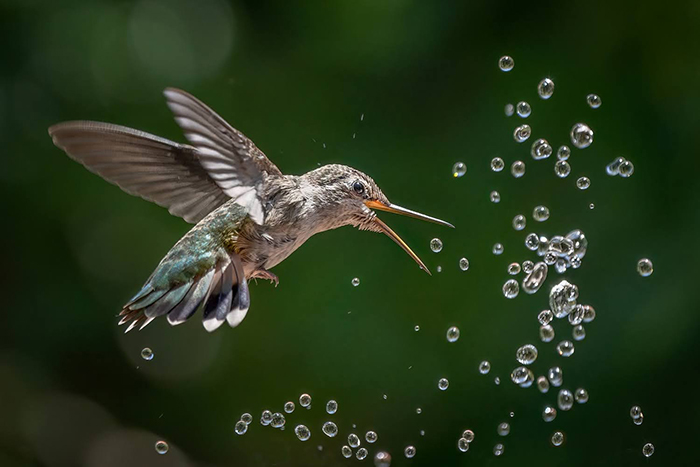
Birding is a lifetime hobby for Peter. He said “one day I will be old and weak, no longer capable of carrying a heavy camera, I will just watch birds with a pair of binoculars and a walking cane, strolling down the trail during the sunset, and this is what life is all about. Love and respect nature.”
We are thankful to Peter for spending time with us in sharing his journey of becoming an excellent wildlife/bird photographer. We wish his uplifting words inspire more people to appreciate nature.
Peter’s Instagram and Youtube Channel
